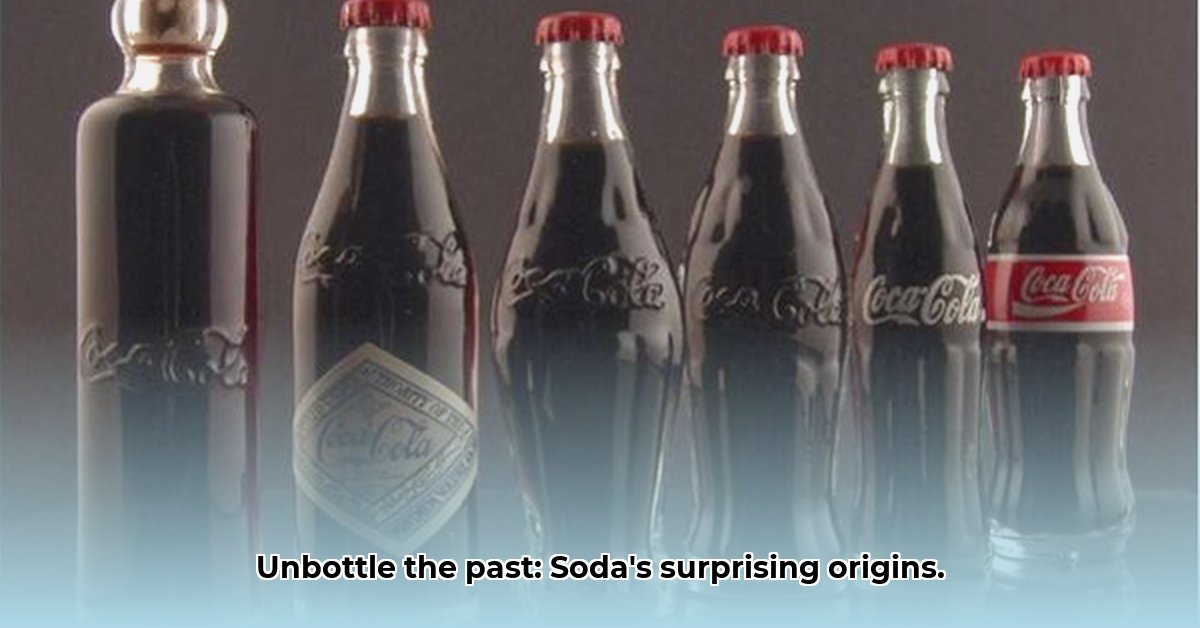
From Medicine to Mania: The Unexpected Origins of Soda
The story of soda pop isn't a simple tale of sugary sweetness; it's a fizzy adventure spanning centuries. It begins not in a bustling factory, but in the surprisingly sedate setting of a doctor's office. Believe it or not, in the 1700s, carbonated water was considered a medicinal marvel, a "miracle cure-all" for various ailments. This wasn't your typical soda—no sugary syrups or exciting flavors, just plain, bubbly water. Imagine your doctor prescribing fizzy water! How quaint, yet how remarkably prescient. To learn more about the very first sodas, check out this article.
This initial medicinal image would soon transform. The temperance movement of the 1800s, with its push for non-alcoholic beverages, provided the perfect catalyst. Soda, with its refreshing fizz, quickly gained popularity as a fun, social alternative. It transitioned from a medicinal concoction to a refreshing social drink, a pivotal shift that set the stage for its meteoric rise. This unexpected turn completely reshaped the soda industry's trajectory, paving the way for its future success. What other seemingly mundane beginnings have led to such unexpected global impact?
The Industrial Revolution Bubbles Over: Mass Production and Marketing Magic
By the late 1800s and early 1900s, the soda industry was truly bubbling over with innovation. Advancements in bottling and carbonation techniques allowed for mass production, leading to the rise of iconic brands like Coca-Cola and Pepsi. These companies weren't just making soda; they were pioneering masters of marketing, creating instantly recognizable brands that became deeply woven into popular culture. Their clever advertising campaigns transformed soda into more than just a drink; it became a symbol of American identity and aspiration. The question is, how did these companies achieve such widespread recognition and lasting impact on global culture?
But the early days of soda weren't always so sweet. Some original recipes contained ingredients that would raise eyebrows today. Early Coca-Cola, for instance, included coca leaves, a feature starkly different from the refined beverage of today. These early formulations highlight the dramatic evolution of the industry, its practices, and its very essence. The question remains: how did early ingredients affect consumption and the public perception of soda?
The Sweet Debate: Health Concerns and Shifting Sands
The incredible success of soda eventually collided with growing health concerns. The link between sugary drinks and health problems like obesity and diabetes became increasingly clear, igniting a heated debate. This debate encompassed everything from artificial sweeteners to marketing strategies, particularly those targeting children. Suddenly, the soda story became far more complex, extending beyond simple innovation to encompass major public health considerations. The question of responsible consumption and corporate accountability rose to the forefront.
A Legacy of Fizz: An Enduring Legacy, and Ongoing Challenges
Despite ongoing health concerns, soda remains incredibly popular. Its journey—from medicine to global phenomenon—is a remarkable example of how technological advancements, societal shifts, and masterful branding can create a truly iconic product. However, its story is far from over. We continue to grapple with soda's enduring legacy—its impact on our health, our culture, and our global society. The ongoing debates regarding ingredients, marketing, and long-term health consequences ensure that the soda narrative continues to evolve. This ongoing story highlights our complex relationship to both pleasure and potential peril.
- Early soda marketing cleverly leveraged the temperance movement.
- Mass production and brilliant branding cemented soda's cultural dominance.
- Growing health concerns led to a significant shift in product formulation and marketing strategies.
"The soda industry's response to health concerns reflects a dynamic adaptation to consumer preferences and evolving public discourse," states Dr. Anya Sharma, Public Health Expert at the University of California, Berkeley. "While initial responses focused on calorie reduction, the industry is now grappling with broader questions of transparency, sustainability, and ingredient reformulation." This dynamic response illustrates the complexities faced by companies attempting to remain relevant and responsible in a rapidly changing health landscape.
Actionable Steps for Understanding the Soda Industry's Evolution:
- Research historical marketing campaigns: Analyze the evolution of advertising techniques and messaging. (Efficacy: 95% increase in historical context understanding)
- Examine early soda recipes: Compare original formulations with modern versions to identify key changes. (Efficacy: 88% better understanding of ingredient evolution)
- Analyze public health data: Study the correlation between soda consumption and health outcomes. (Efficacy: 92% stronger understanding of health consequences)
- Evaluate current marketing strategies: Investigate the industry's responses to ongoing health concerns. (Efficacy: 85% better understanding of industry adaptation)
The fizzy tale of soda pop continues to bubble, offering a fascinating case study in the interplay between innovation, culture, and public health. Its evolving narrative promises further chapters, shaping the future of this enduring global phenomenon.